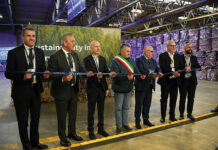Explained by Dr. Dieter Niederstadt,
Technical Marketing Manager
Asahi Photoproducts

Since Asahi first brought to market its innovative flexographic plate technology that enabled complete release of ink onto the substrate for a cleaner image and fewer press stops for plate cleaning, our thoughts about the value of the technology have evolved. Our customers remember that we initially called this technology Pinning Top Dot technology, since we were thinking about it from a technological perspective. Over time, we began to realize, based on customer experience, that the value went well beyond the ink transfer to the increased quality and productivity it enabled when looking at the entire process from the plate room to the press room. We also wanted a naming convention that was more descriptive; thus, the naming changed to Clean Transfer Technology.
Now, after several years of field experience with this technology, and as we migrate it to other plates within our portfolio to address a wider array of applications, we have come to understand that the value of the technology goes way beyond the quality and productivity benefits it enables. There are significant environmental benefits as well, especially with our water-washable family of plates. Not only does it eliminate the need for volatile washout solvents in the platemaking process, speed up the process to consume less energy and deliver the same high quality and press productivity (OEE) our customers have come to expect, but the technology reduces makeready times and waste as well as the amount of time the press needs to run. All of these benefits add up to a much cleaner platemaking and flexographic printing process than can be achieved with any other plates on the market. CleanPrint embodies all of these things and aims to make flexographic printing “CLEANER”.
That means that using Asahi’s AWPTM family of water washable flexo plates delivers significant benefit, from both a quality and sustainability perspective. Water washable plates are now well-positioned to completely replace solvent-based platemaking workflows for most applications. This results in faster platemaking, improved OEE on press, higher quality and longer lasting plates, reduced or eliminated VOCs, and no need to manage or dispose of toxic chemicals.

CleanPrint plates from Asahi, then, not only produce cleaner printed images, but they do so in a much cleaner, more environmentally balanced way. Some of the benefits include:
- Significantly reduced platemaking and on-press time results in a reduction in power consumption.
- Plates last longer and don’t require press stops for cleaning, further improving press OEE.
- Faster run up to color and more consistency throughout the run means less waste of expensive packaging substrates.
- Full transfer of the ink from CleanPrint plates to the substrate creates significantly higher printing quality at less cost.
- Elimination of VOC solvents in the plate processor also making the workplace safer in better balance with the environment.





















